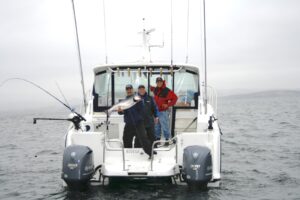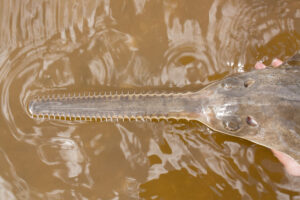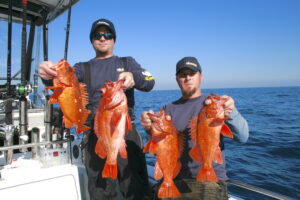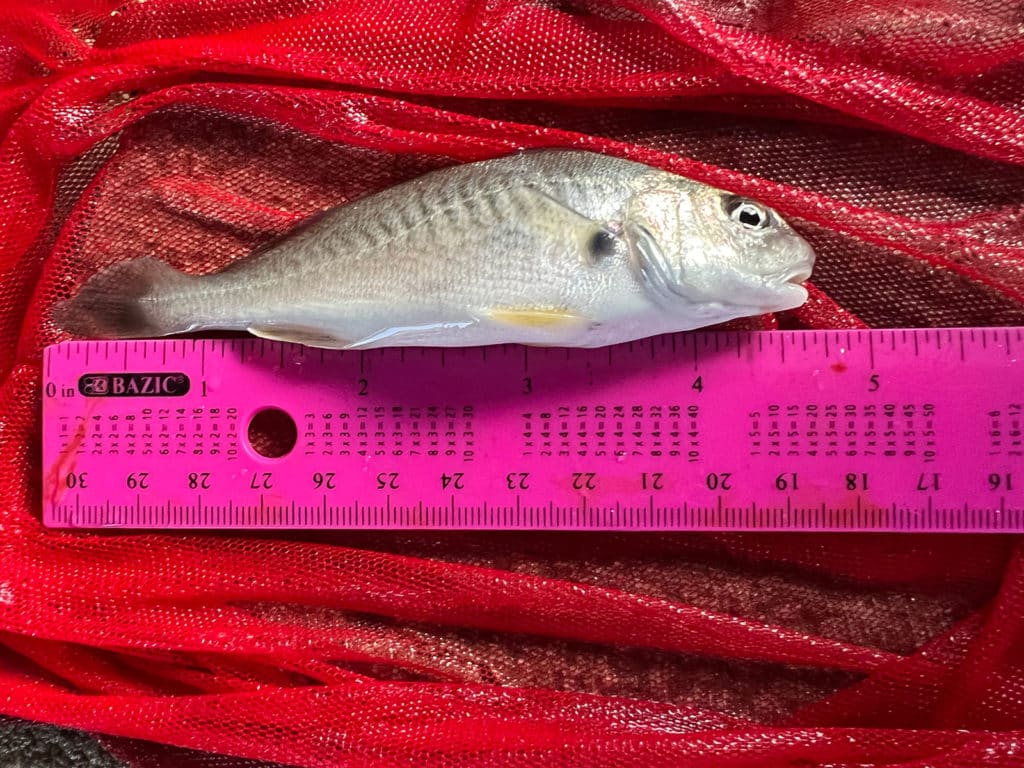
Many snook, redfish, grouper, and trout anglers believe a 4- to 8-inch croaker is the most productive live bait available, particularly in the surf, around jetties, and over shallow grass flats. Farther north along the Atlantic coast, anglers use croakers to catch striped bass too, in areas such as the Chesapeake Bay.
The baitfish’s popularity is partly because croakers make a “croaking” sound by vibrating muscles against a swim bladder to produce a noise that’s the loudest in the drum family. Croakers attract predators with their unique drumming sounds.
But croaker populations are experiencing statewide declines in the state of Florida, and that’s where hatchery rearing comes into play.
Farm Raised Croakers
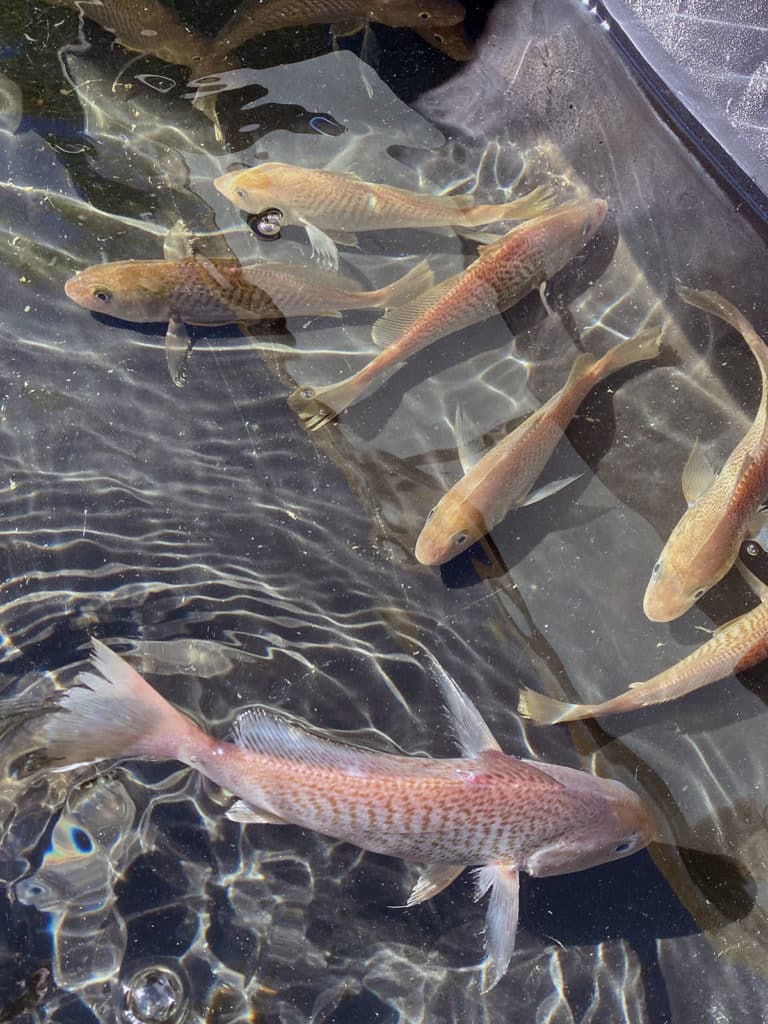
In Fort Pierce, Florida, one company is trying to spawn croakers in tanks all year long. Nicole Kirchhoff, Ph.D., is the CEO and founder of Live Advantage Bait. Her doctorate is in aquatic animal health, and she’s successfully reared other fish in the past, including pinfish and pompano. Now she’s raising Atlantic croakers in captivity.
“Croakers have always been on our radar, and they do very well in captivity,” said Kirchhoff. “They were moderately popular in bait shops 10 years ago, but that popularity is soaring now.”
Kirchhoff says the challenge is extending their spawning window, because the spawning season for mature adult croakers (5 to 7 inches long) in the wild is relatively short — November through March. She’s been able to mimic spawning-season conditions via light and water temperature manipulation.
Atlantic Croaker Hatchery Spawning Success
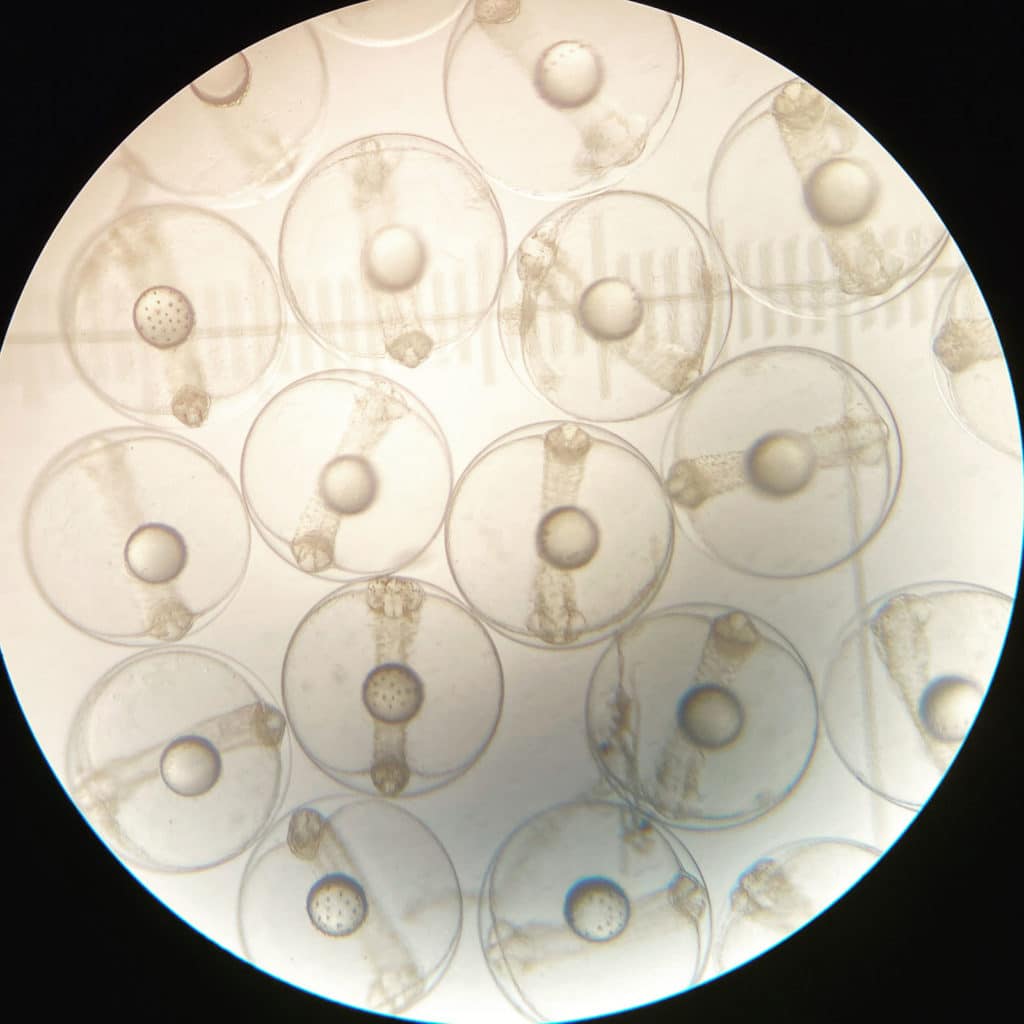
“Last November I was able to acquire brood fish from an Indian River Lagoon angler,” said Kirchhoff. “We quarantined them, then successfully conditioned them to spawn through the summer in our land-based tanks. These parent fish produced more than 15,000 eggs. That was a big breakthrough.”
Kirchhoff’s operation is a hatchery, not a grow-out facility. Her plan is to use two different avenues of sale. One, sell to grow-out companies which can raise croakers to traditional bait-shop size (4 to 5 inches). Two, to sell to research institutions. Her company does not foresee trucking mature baits directly to bait shops.
“We are hearing that the shops actually want 7-inch fish now,” said Kirchhoff, “and that is reasonable and attainable because Atlantic croakers grow an inch a month.”
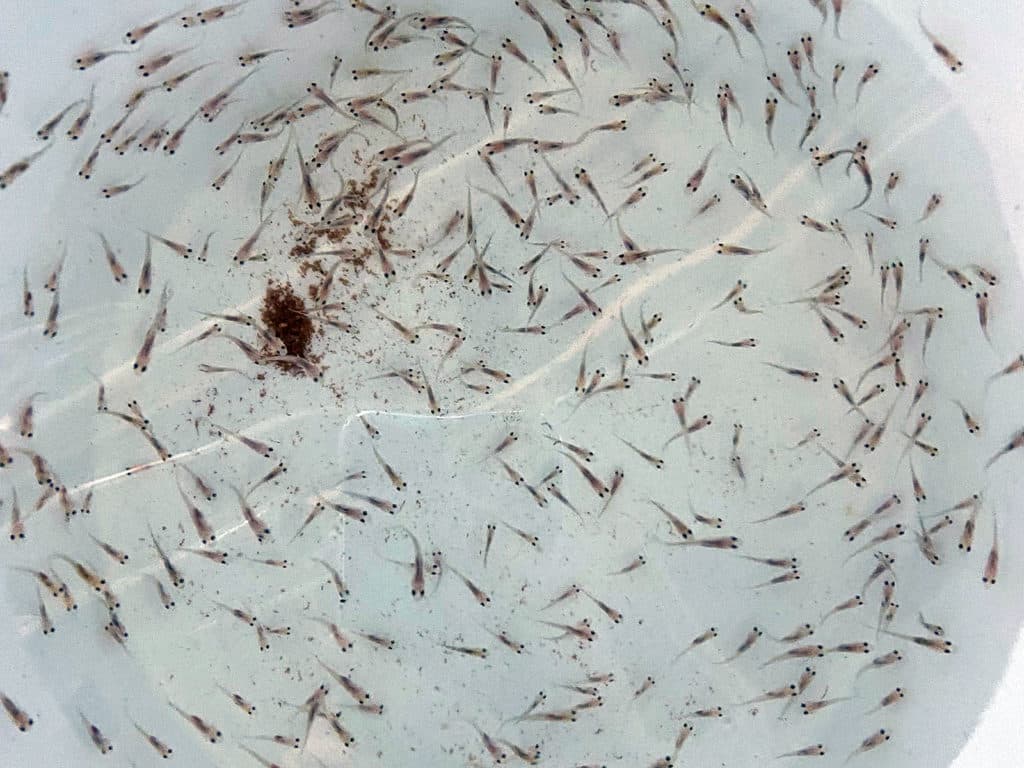
Asked whether croakers will replace the popular pinfish in Florida bait shops, Kirchhoff said that unlike pinfish, 100 percent of croakers in shops are currently wild-caught.
“We hope to be in the croaker marketplace by this winter,” said Kirchhoff. “There are too few grow-out operations right now to get our hatchery croakers to the angler. Ideally, we want to be a hatchery, and need a network of growers who bring the fish to size and deliver them dependably.”
Expanded hatchery croaker production will have a major impact, helping take pressure off wild stocks. But there’s a socio-economic benefit to the Southeast U.S. recreational fishing industry as well. From the hatchery to the growers to the bait shops, increased revenues and job creation can be expected. Some estimates predict the overall economic impact of croaker aquaculture to be $23.6 million annually.
The Florida Fish and Wildlife Conservation Commission (FWC) provided Kirchhoff a list of licensed Florida bait shops, about 10,000 in total. She plans to contact shop owners directly, asking if they’re interested in selling her hatchery raised croakers. “If they take on live croakers, we’ll give them free baits for one month on a trial basis,” she says.
All About Croakers
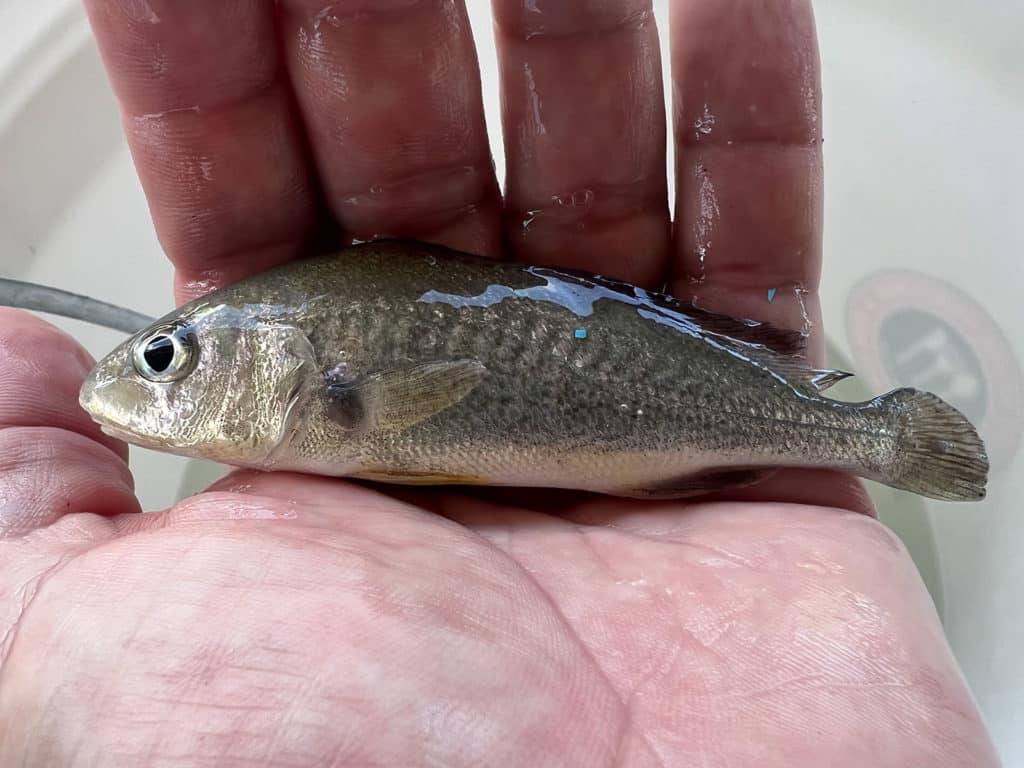
Cast-netting captures croaker baitfish quickly on the beach and in coastal estuaries. Another option is to use multi-hook rigs such as Sabikis, or single hooks, baited with shrimp. When available at bait shops, croakers sell out in no time at all.
Croakers are also a decent food fish, though catches are typically small, 10 to 12 inches long. Maximum size tops out at about 20 inches. At the start of 2022, the FWC enacted a daily recreational bag limit of 50 croakers per person. There’s no minimum size limit, which keeps the door open for anglers using them for live bait, regardless of recent coast-wide declines in abundance.
The Atlantic Croaker is a medium-size member of the drum family, increasingly available in Florida and U.S. coastal bait shops for $8 to $10 per dozen. It’s a hardy fish in captivity and on a hook; that toughness makes it a more desirable bait than pinfish or mullet. Pinfish, another prized live baitfish, are suffering declining stocks in many Florida regions.
Pinfish Baitfish Declining at Alarming Levels in Florida
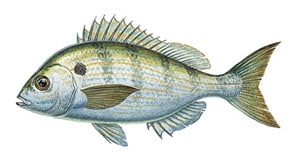
Kirchhoff closed by saying the pinfish stocks in much of the Indian River Lagoon (IRL) and other state regions have declined along with seagrass loss. Her operation did release more than 6,000 pinfish into the lagoon system in 2016 and 2017, but she feels a rebound of this vital forage fish is unlikely.
“They have become a ‘missing link’ directly due to grass loss” said Kirchhoff. “Keep in mind that pinfish are grazers of epiphytes that attach to grass blades. That cleaning actually benefits grass by stimulating growth of new shoots, and we’ve lost that benefit.”

